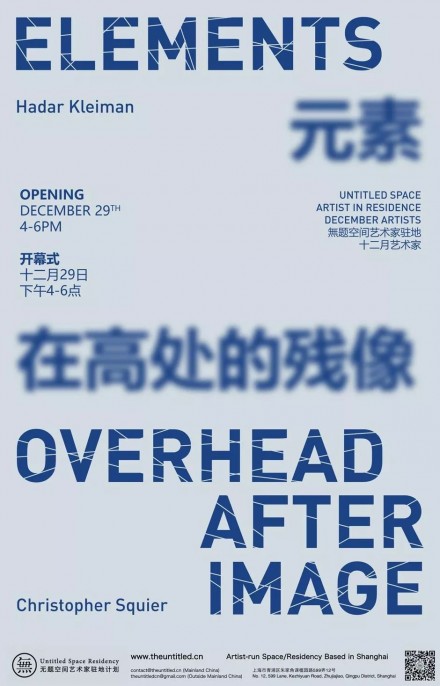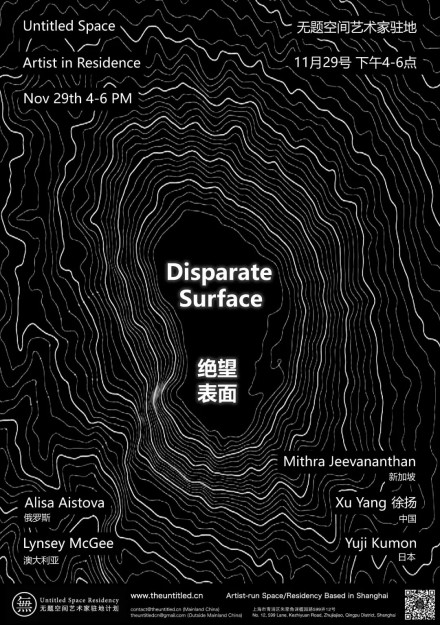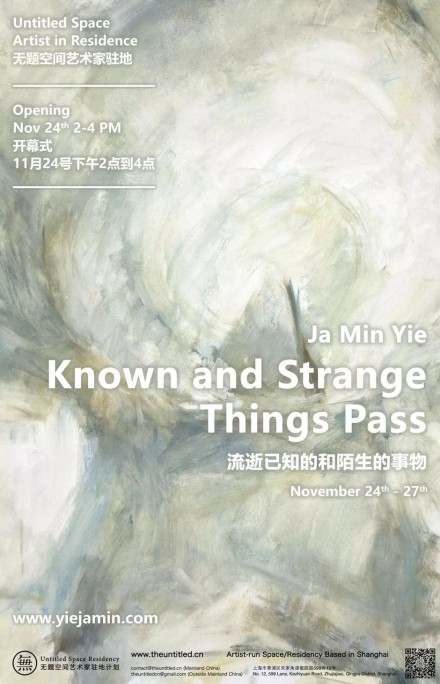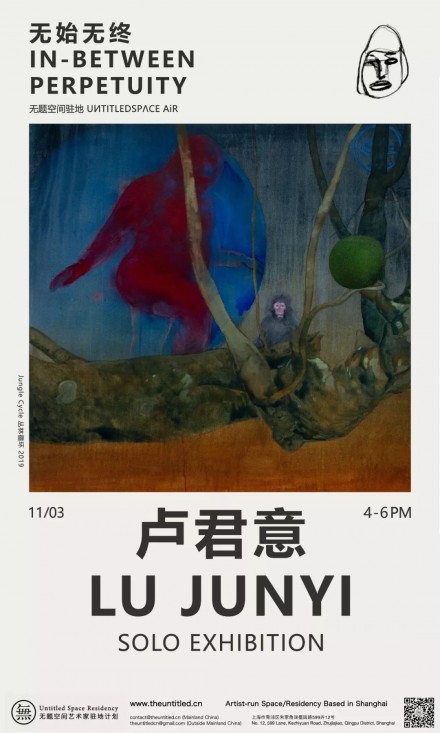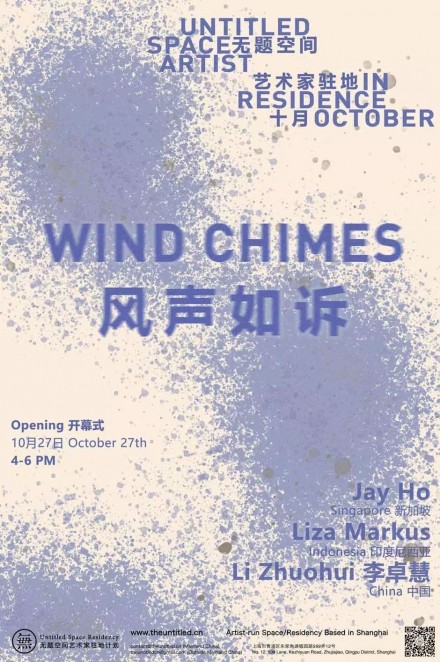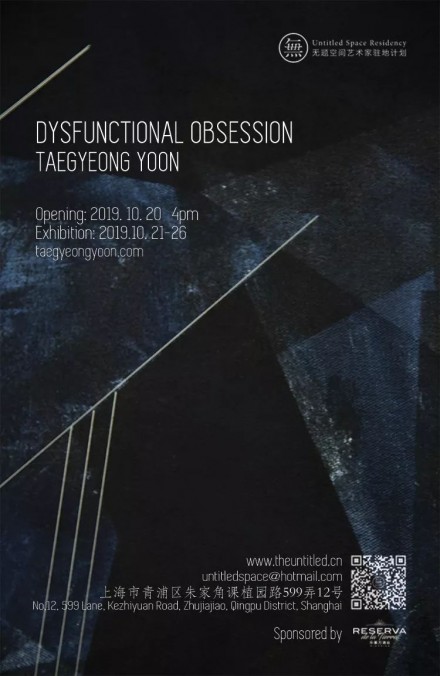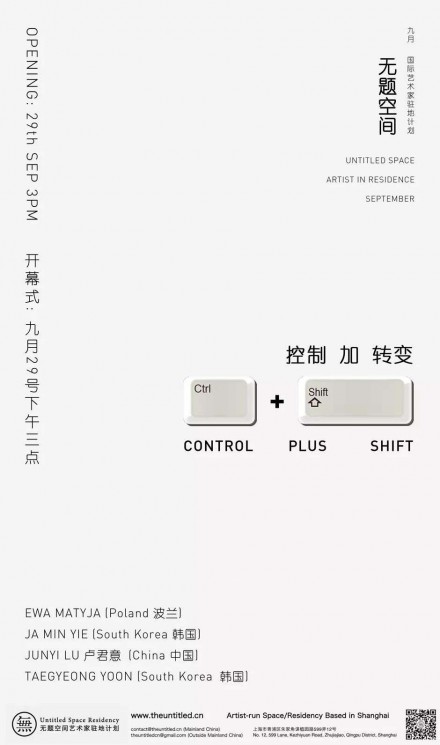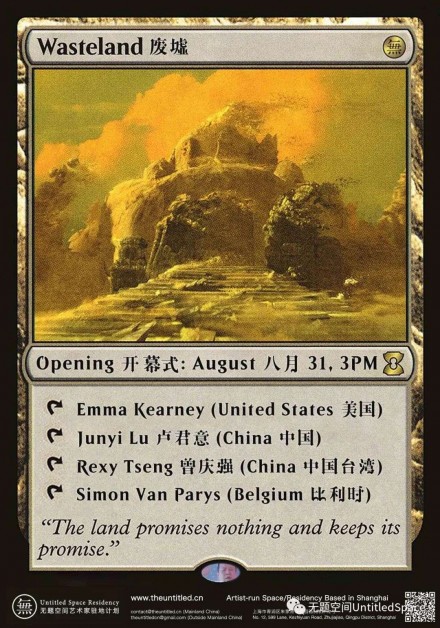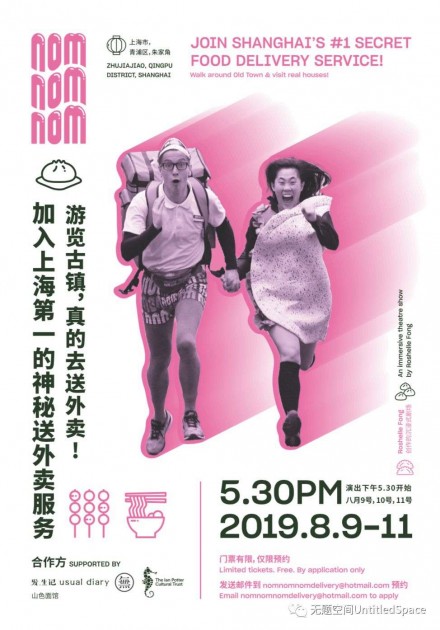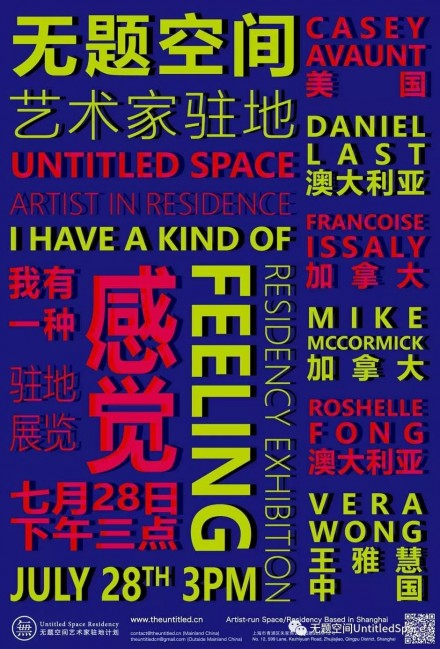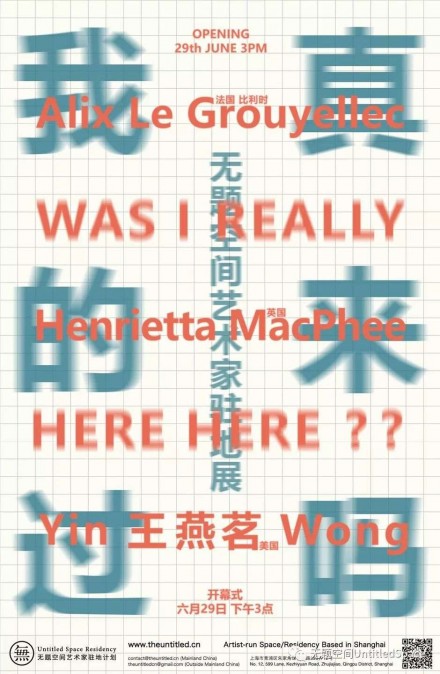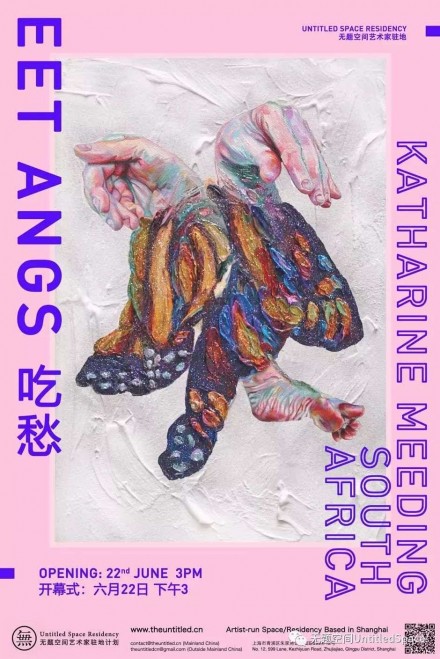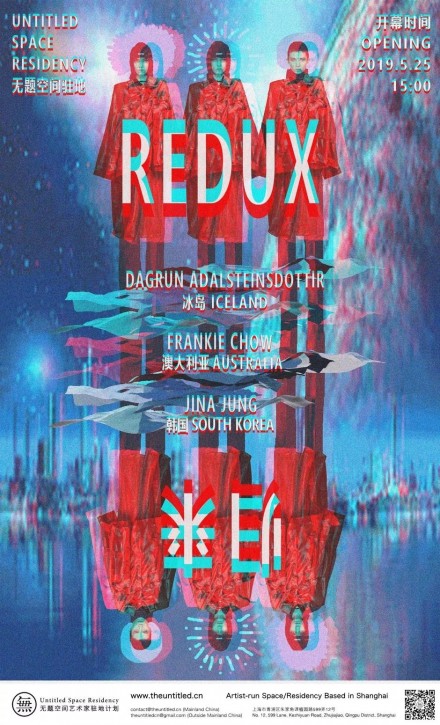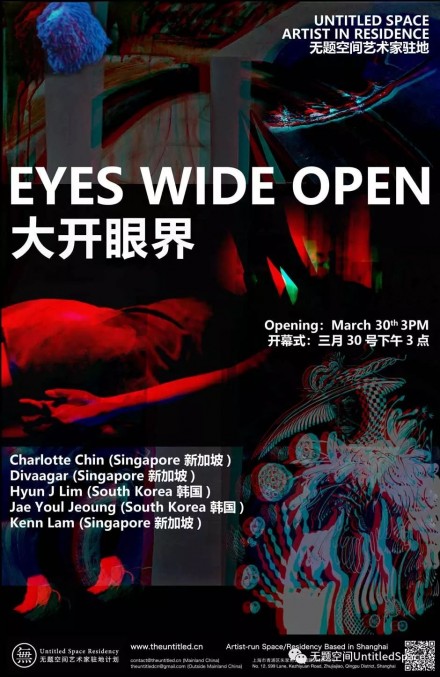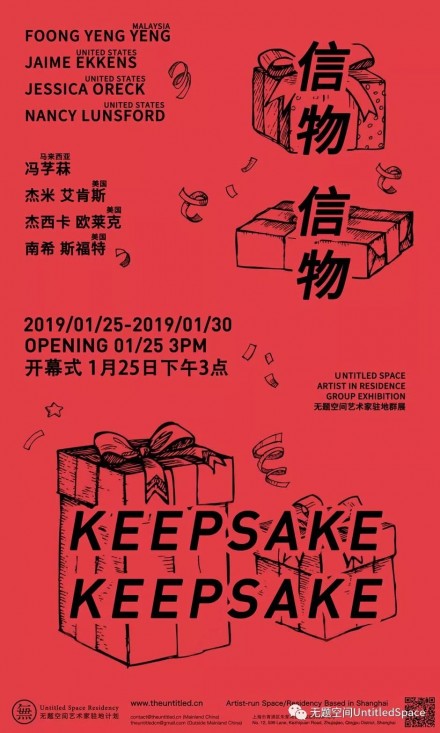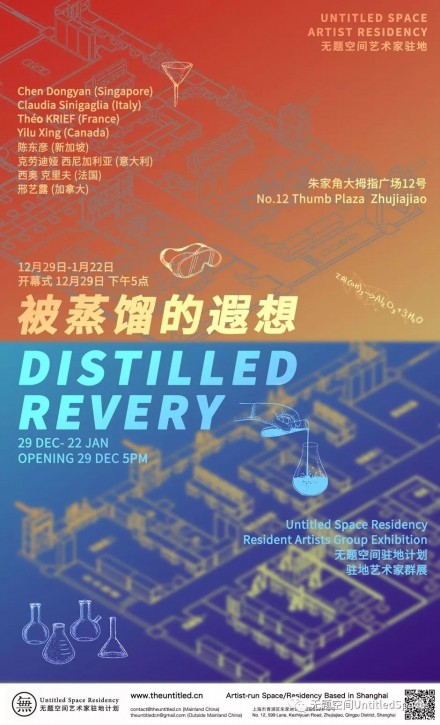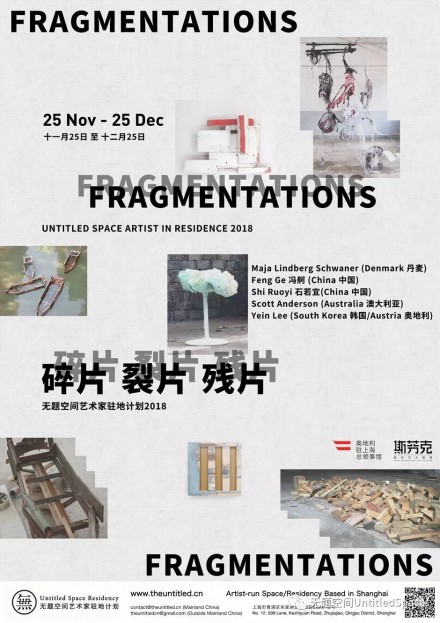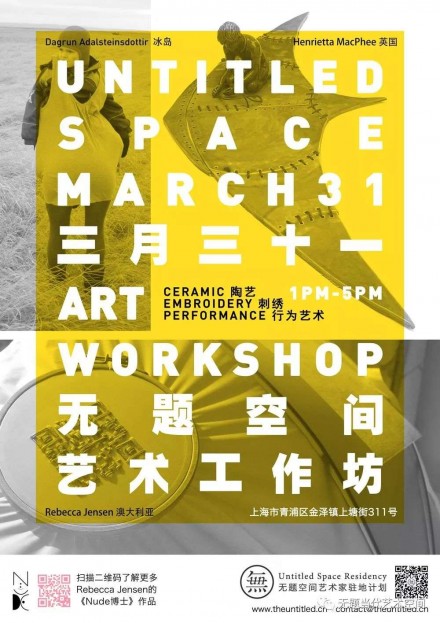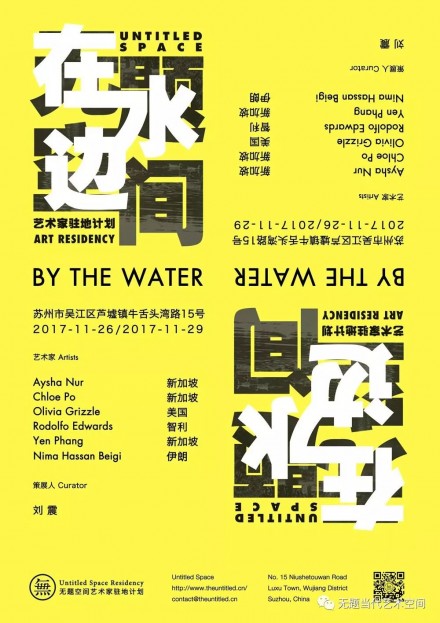元素&在高处的残影 Elements&Overhead, afterimage
无题空间今年的最后一展
驻地艺术家群展
Hadar Kleiman(以色列)
Christopher Squier(美国)
元素&在高处的残影
开幕时间
12月29日(周日)下午4-6点
大家今年最后一次的喝起来吧!
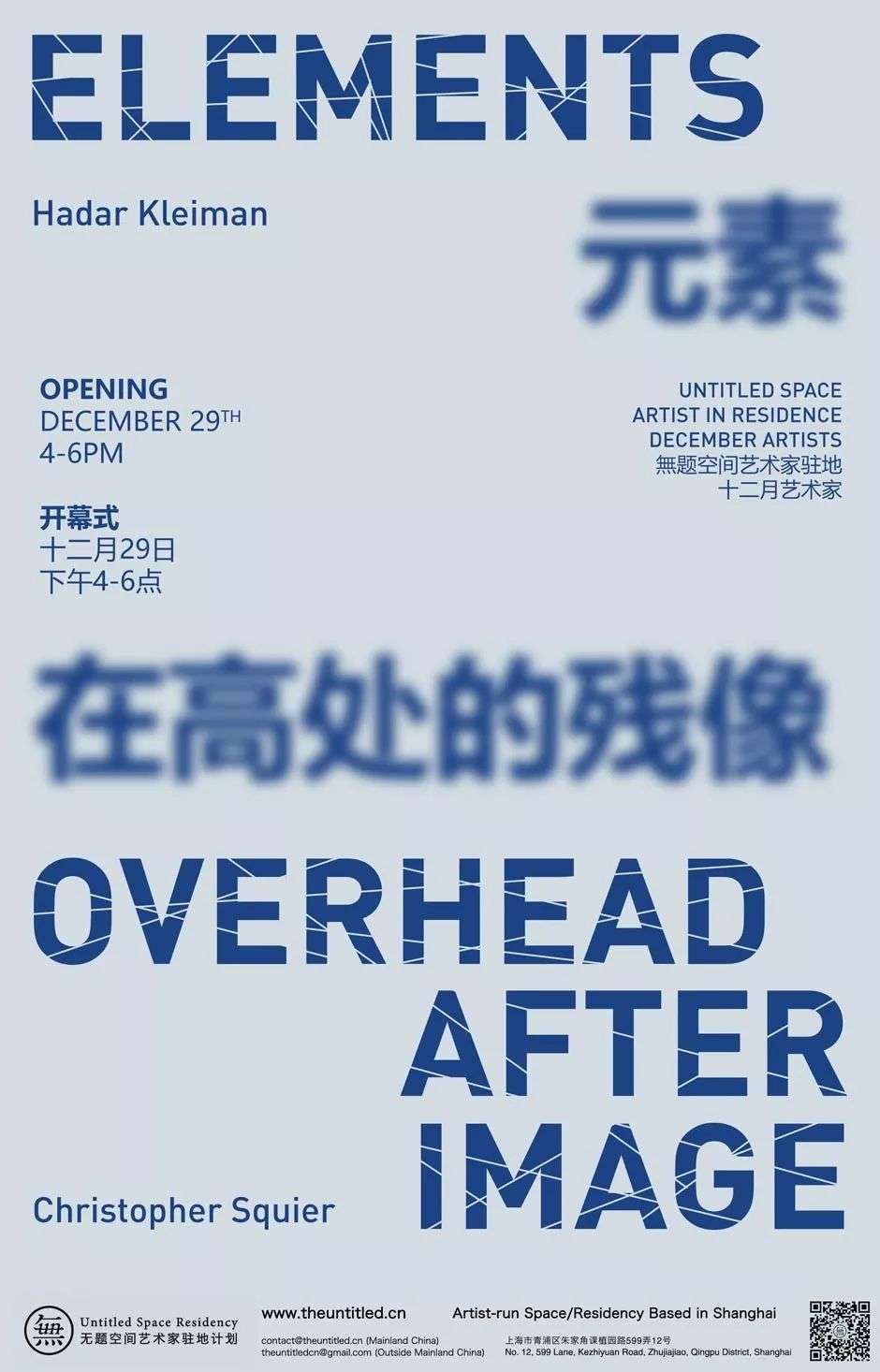

Hadar Kleiman是居住在旧金山的以色列艺术家。她2013年毕业于耶路撒冷的Bezalel艺术与设计学院,并获得了文学学士学位。她也曾加拿大蒙特利尔的康考迪亚大学的交换生,并在2015年,从旧金山艺术学院获得了艺术硕士学位。她曾获得过安妮·布雷默奖。她主要活动与在旧金山湾区和以色列。她参加了包括UNTITLED旧金山和stARTup等各种艺术博览会。
Hadar Kleiman is a San Francisco-based artist born in Israel. She received her BFA from Bezalel Academy of Art and Design in Jerusalem in 2013. She attended Concordia University in Montréal, Canada as part of a student exchange program and received her MFA from the San Francisco Art Institute in 2015. She is a recipient of the Anne Bremer Award. Kleiman has shown work predominantly in the San Francisco Bay Area and Israel. She has participated in various art fairs including the UNTITLED San Francisco, and stARTup.
Kleiman目前主要从事陶瓷和木质作品的创作,制作出类似西洋镜的装置和雕塑,以探索消费文化中高低两层的美学。她的作品以她当前的周围环境为中心,反映了她对于所居住环境的观察结果。
Kleiman currently works mainly with ceramics and wood, creating diorama-like installations and sculptures, which explore the aesthetic of high and low within consumer culture. Her work revolves around her current surroundings and reflects observations of the environment where she resides.
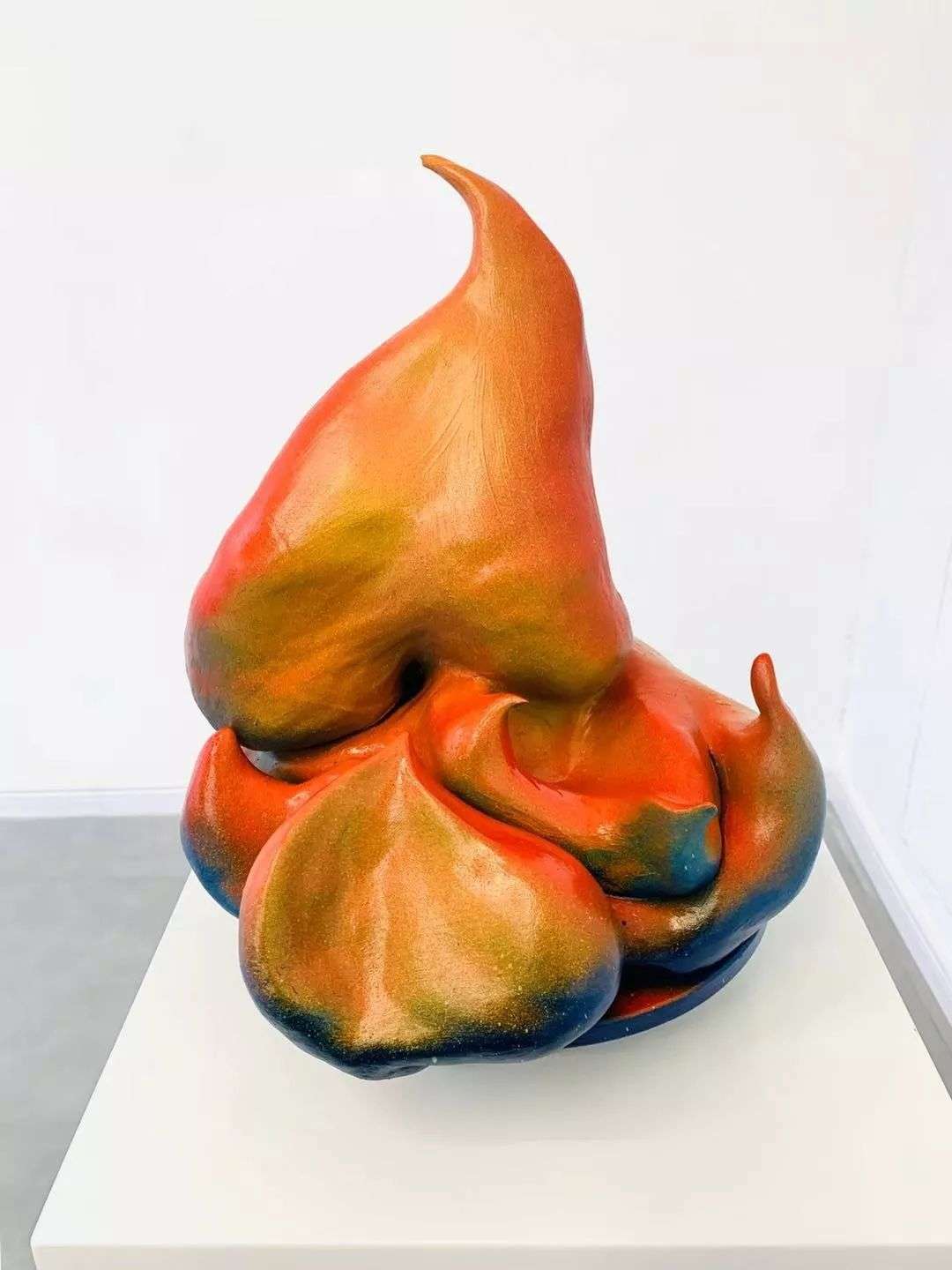
在12月的冬天里,从古老的朱家角水乡汲取灵感,展出的作品围绕着火与水之间的拔河比赛展开。
In the cold weather of December, taking inspiration from the ancient water town of Zhujiajiao, the show revolves around the tug of war between the elements of fire vs. water.
展览的主要作品是《围墙》,这是一堵近2米长的用泡沫制成的砖墙。 围墙站在镜子前,给人与另一面砖砌围墙仅一步之遥的幻觉。 这个临时围墙实际上并没有阻挡或保护任何物品。 相反,它是障碍的独立象征,其作用与中国从西方世界获得的一些虚拟障碍非常相似。
The main piece in the show is Fence, a nearly 2-meter-long brick wall made of crafting foam. The fence stands in front of a mirror, creating the illusion of another brick fence just steps away. The makeshift fence does not actually block or protect anything. Rather, it is a standalone symbol of a barrier, which functions much like some of the virtual blocks China has from the outside Western world.
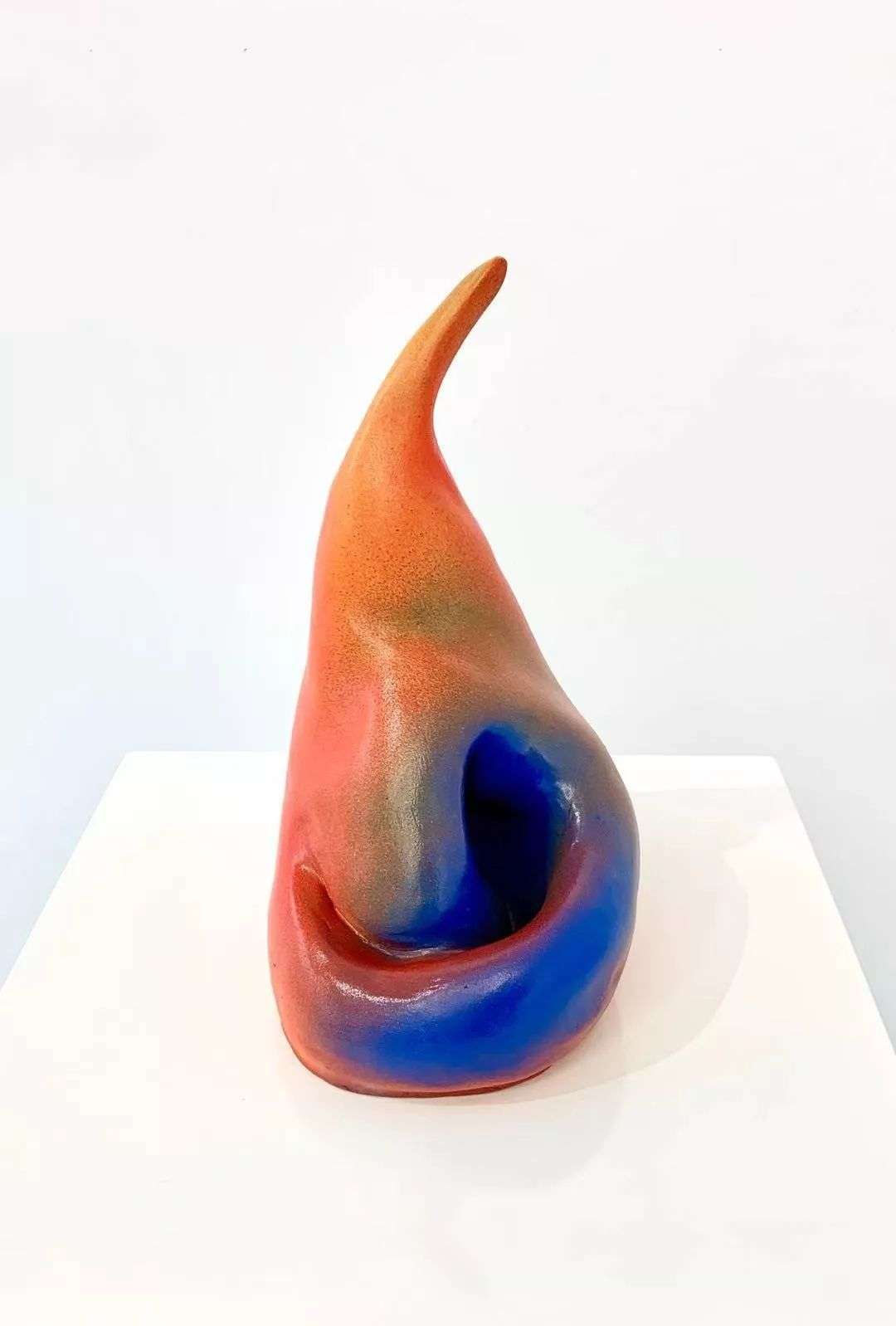
围墙上的空隙被用作微型雕塑的架子,几乎就像纪念品商店橱窗里陈列的手工制作的、量产的产品们。多种树脂压铸的幸运猫,成为了某种货币,既可作为旅游纪念品,又可实用为迎宾的装饰。猫的传统白色或金色已被去掉,取而代之的是蓝色和橙色。旁边是树脂花瓶上,装有假花和人造的仿古石头,在同一件作品上有人工和天然的组合,就像朱家角的古镇一样,这里既有天然的古老街道和诉说着古老历史的石砖,又有旅游商店提供的新塑料玩具和饰品等。砖块后面的火焰雕塑是拟物的表达,模仿了火所产生的热量和温暖。
Gaps in the fence are used as shelves for miniature sculptures, almost like a tourist shop window display of handmade, mass-produced items. Multiple resin castings of the Lucky Cat, a token used both as tourist memorabilia and an actual lucky symbol for greeting. The cat’s traditional colors of white or gold have been removed and instead, it is cast in contrasting blue and orange. Next to it are resin vases with fake flowers and polymer clay miniatures of ancient stones, a combination of faux and natural in the same place, much like Zhujiajiao’s ancient town which houses both the ancient history of natural old routes and stones and newer tourist shops offering plastic toys and trinkets. Little fires in the back of the bricks are more of illustrative representation, emulating the warmth of fire radiating heat.
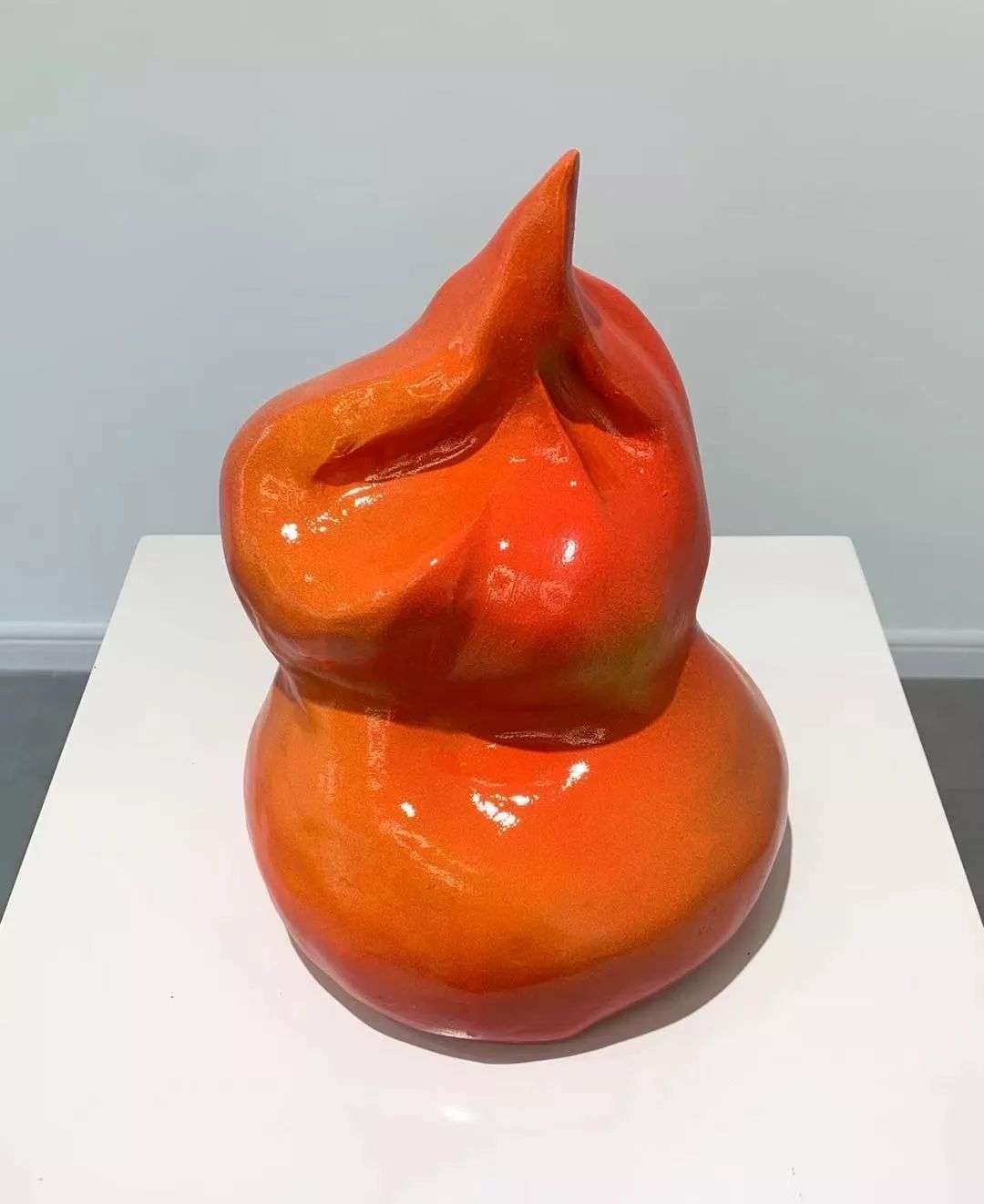
由陶土和树脂制成的独立火焰雕塑遍布在画廊空间。这些雕塑捕捉到了光与热的永久移动和虚幻结合的静止时刻。它们通过镜子中颜色和形状的反射体现了这个想法,随着观众们走来走去,颜色和形状会发生变化,展现出雕塑的不停侧面。
Spread throughout the gallery space are individual fires made of clay and resin. The sculptures are capturing a still moment of what is a forever moving and illusive combination of light and heat. They represent this idea through the reflection of colors and shapes in the mirror, which shift as the viewer moves around, revealing more sides.

Christopher Squier是生活和工作在美国旧金山的雕塑家和装置艺术家。他毕业于Grinnell College,并获得艺术学士学位,然后在旧金山艺术学院获得雕塑艺术硕士学位。部分个展包括R / SF项目,加利福尼亚州旧金山(2018); BABEL Visningsrom for Kunst,挪威特隆赫姆美术馆(2016); Fort Mason Herbst Pavilion加利福尼亚州旧金山(2015); 和史密斯画廊,格林内尔,爱荷华州(2013,2011)。 入选的群展览和表演包括加利福尼亚州旧金山的临时画廊(2018); 荷兰海牙外派人员档案中心(2018年); PS8,加利福尼亚州旧金山(2017); 互联网档案馆,加利福尼亚州旧金山(2016年); 旧金山国际艺术节,加利福尼亚州旧金山(2016年); SAFEhouse Arts,加利福尼亚州旧金山(2015年); 捷克玻璃布拉格画廊和ZIBA布拉格玻璃体验博物馆,捷克共和国布拉格(2015年); CoMbO项目空间,西班牙科尔多瓦(2015); 和Pier 50,旧金山,加利福尼亚州(2015)。
Christopher Squier is a San Francisco-based sculptor and installation artist. He received his BA in Art from Grinnell College and his MFA in Sculpture from the San Francisco Art Institute. Selected solo exhibitions include R/SF projects, San Francisco, CA (2018); BABEL Visningsrom for Kunst, Trondheim, Norway (2016); Fort Mason Herbst Pavilion, San Francisco, CA (2015); and Smith Gallery, Grinnell, IA (2013, 2011). Selected group exhibitions and performances include Provisional Gallery, San Francisco, CA (2018); Expatriate Archive Centre, The Hague, Netherlands (2018); PS8, San Francisco, CA (2017); Internet Archive, San Francisco, CA (2016); San Francisco International Arts Festival, San Francisco, CA (2016); SAFEhouse Arts, San Francisco, CA (2015); Prague Gallery for Czech Glass and ZIBA Prague Glass Experience Museum, Prague, Czech Republic (2015); CoMbO Project Space, Córdoba, Spain (2015); and Pier 50, San Francisco, CA (2015).
Squier的作品探索了光学和光在当代视觉文化中的作用,并围绕发光和透明性进行了研究,以将视觉,光学和感知定位为一种可替代历史的体验。
Squier’s work explores optics and the role of light in contemporary visual culture, drawing on research around luminescence and transparency to position vision, optics, and perception as historically-altered experiences.
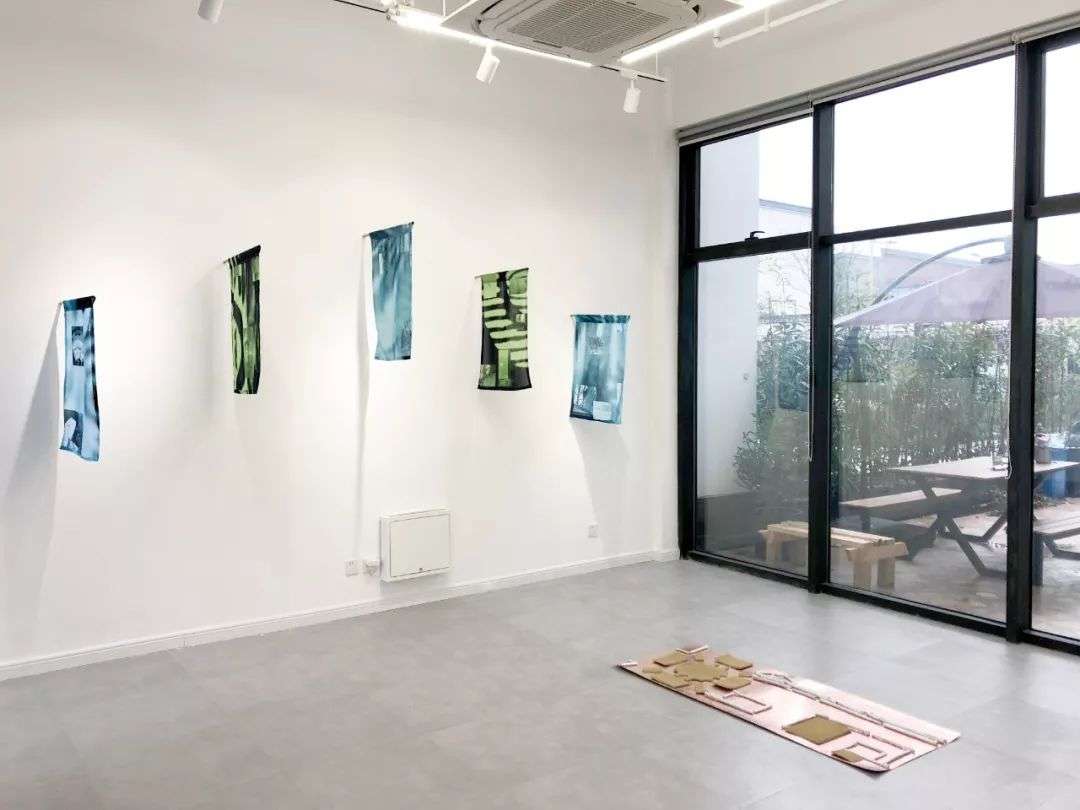
《在高处的残像》,展出了本次驻地的作品和过去作品的结合,探讨功能性和装饰性之间的区别,对于日常事物的解构和建筑、导航、以及建筑物与自然环境之间的关系。
Overhead, afterimage is an exhibition of new and past work exploring the distinction between the functional and the decorative, deconstructing commonplace objects associated with architecture, navigation, and the relationship between built and natural environments.
前三幅作品是纸上的铅笔素描,描绘了抽象的,对比鲜明的图案,称为波干扰图案。波干扰的物理过程是一种现象,当光,音频,无线电波或水的两个波叠加在一起以产生振幅更大或更小的波时发生。尽管这些纹理展现出物理物质和能量的基本原理,但它们在视觉上还是神秘而催眠的。最初由美国纪录片摄影师贝伦尼斯·阿伯特(Berenice Abbott)使用波纹水箱来进行标志性描绘,干涉图案暗示着一种转移的,虚幻的现实感,其中的对立,两极化和反相产生了盲点和忽隐忽现的错觉。
The first three works are graphite drawings on paper depicting abstract, contrasting patterns known as wave interference patterns. The physical process of wave interference is a phenomenon that occurs when two waves of light, audio, radio, or water are superimposed to create a resulting wave of greater or lesser amplitude. While these patterns exhibit an underlying principle of physical matter and energy, they are also visually mysterious and hypnotic. First iconically depicted using ripple tanks by the American documentary photographer Berenice Abbott, interference patterns suggest a shifting and illusory sense of reality in which opposition, polarization, and antiphase create blind spots and moments of invisibility.
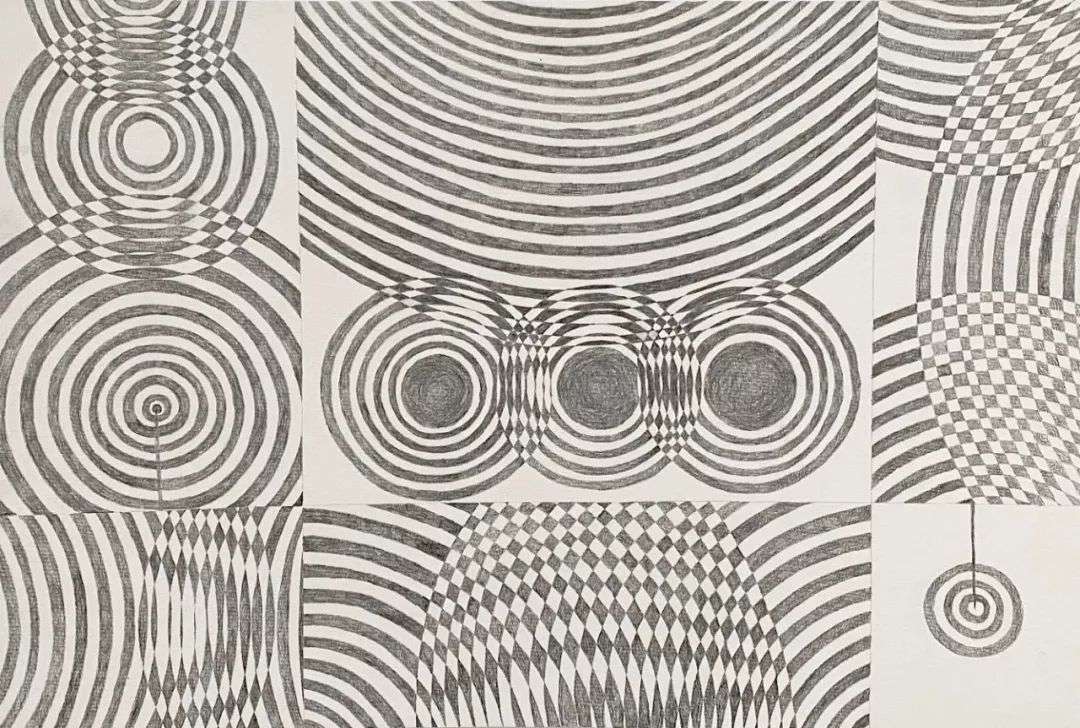
在布料上的一系列相关摄影作品中,观赏对象和海平面上的卫生状况将物理课本中扫描的图像与导航灯和灯塔的文献图像结合在一起。这些作品中的图像显示了位于加利福尼亚的Point Arena和挪威的苏拉岛的两座灯塔的光学技术和自然生态系统。这些作品以摄影与光的索引关系为基础,以菲涅尔透镜的曲线形式的图像为特征。菲涅尔透镜是在灯塔和船上使用的紧凑型透镜,它们曾经是尖端的海洋技术,并且是改变光的本质理论的关键。历史上,在灯塔中发现的菲涅耳透镜在功能和装饰之间划分了界线,并经常在19世纪和20世纪世博会展出过。布料上的印花以绿色和蓝色的金字塔弧形排列,让人联想起插在地上的旗帜,就像灯塔可能会标记位置,边界或海岸线一样。
In a related series of photographic prints on fabric, Ornamental objects and There is sanity at sea level combine images scanned from physics textbooks with documentary images of navigation lights and lighthouses. The images in these works show the optical technology and natural ecosystems of two lighthouses in Point Arena, California and Sula Island, Norway. Building upon photography’s indexical relationship to light, the works feature images of the curvilinear form of Fresnel lenses—compact lenses used in lighthouses and aboard ships, which were once cutting-edge maritime technology and key to shifting theories of the nature of light. Historically, Fresnel lenses found in lighthouses split a line between function and ornament and were often exhibited in spectacular displays at World Expos during the nineteenth and twentieth centuries. Arranged in a pyramidal arc in green and blue, the fabric prints evoke planted flags, much as a lighthouse might mark a location, boundary, or coastline.
最大的的2.5米 x 1.5米的布料印花,背光地悬挂在画廊的窗户上,将三个导航镜头的图像叠加在朱家角和周围建筑物上。 标题《海平面上有真理》来自于英国殖民主义迷信,其基于对紫外线的伪科学理解。
A larger, 8 x 5 foot fabric print hangs backlit in the windows of the gallery, superimposing the images of three navigation lenses onto the exterior patio and surrounding building of Zhujiajiao. The title, “There is sanity at sea level,” borrows from a British colonial superstition based on pseudoscientific understandings of UV light.
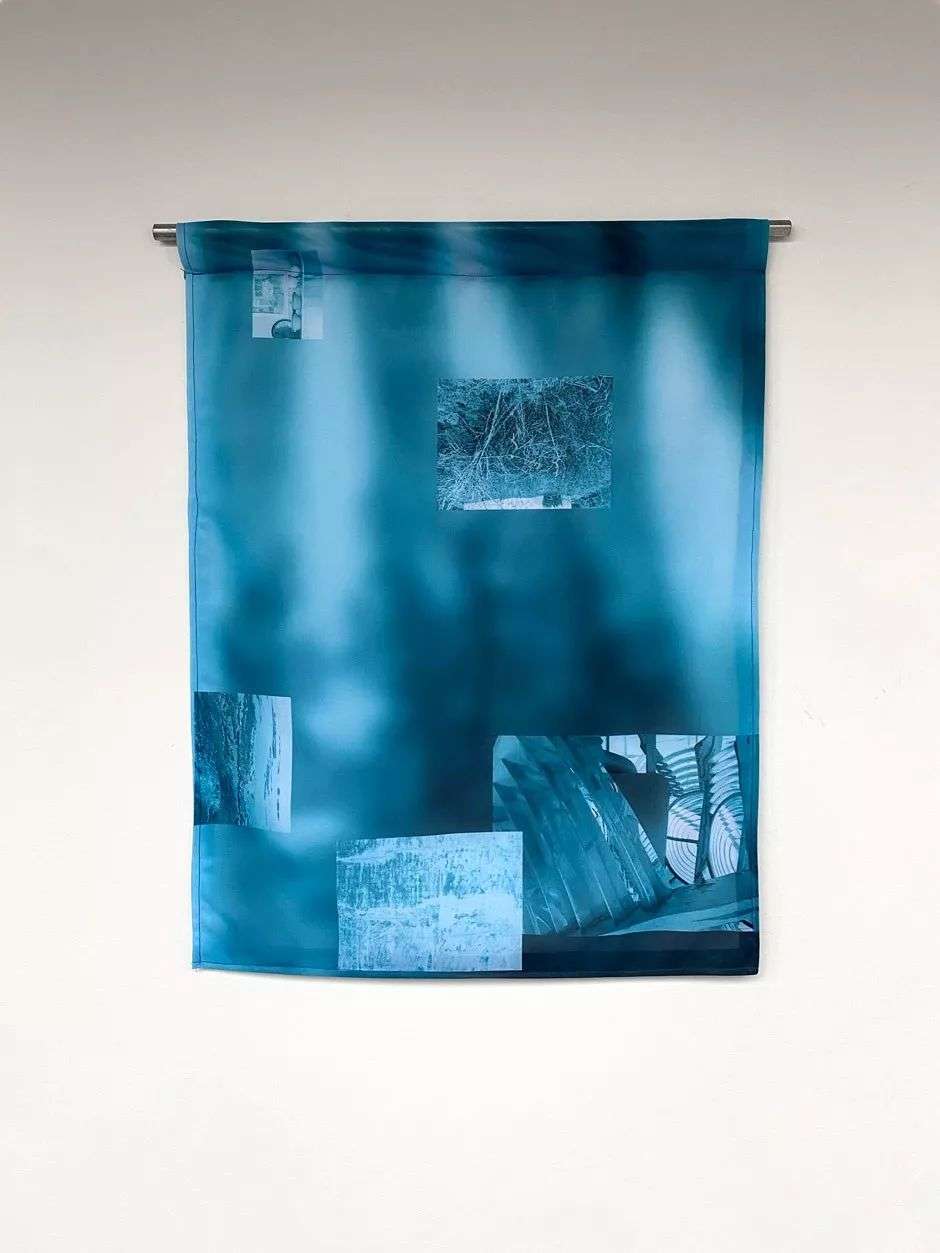
展出的最后一件作品是AUX盒式风机盘管装置,它将陶瓷和其他介质组合在一起,构成了空调装置的解体。导管和电线用陶瓷竹管来表带,装置的主体经过粉状上色处理,该寄生植物生活在树木的树枝上,在欧洲的传统中与仲冬有关。受朱家角用竹子作为建筑材料的使用以及临近冬至的展览时间的启发,该作品将自然生物的结构,应用于邻近建筑物外部常见的建筑功能机制。
The final work in the exhibition, AUX cassette fan coil unit, combines ceramic and other media in a deconstruction of an air conditioning unit. Ducts and electrical conduits are depicted with ceramic bamboo pipes and the body of the unit has been treated with powdered mistletoe, a parasitic plant that lives high up in the branches of trees and is associated with midwinter in European traditions. Inspired by the use of bamboo as a construction material in Zhujiajiao and the timing of the exhibition close to the winter solstice, the work applies the structures of natural organisms to an architectural, functional mechanism commonly found on the exterior of neighboring buildings.
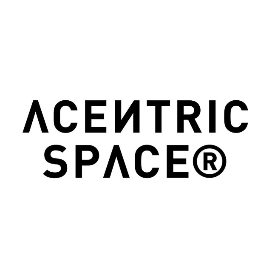
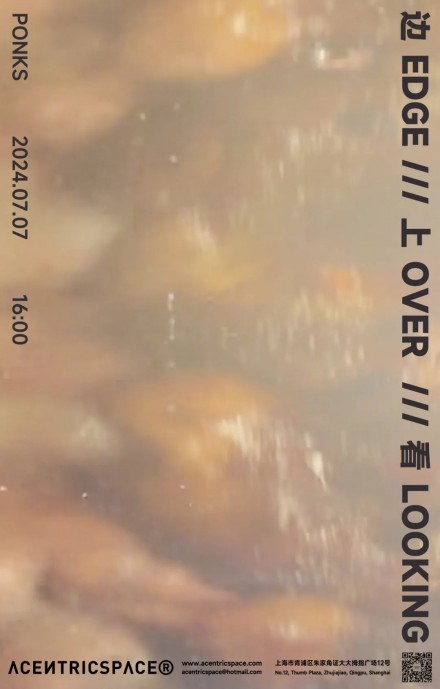
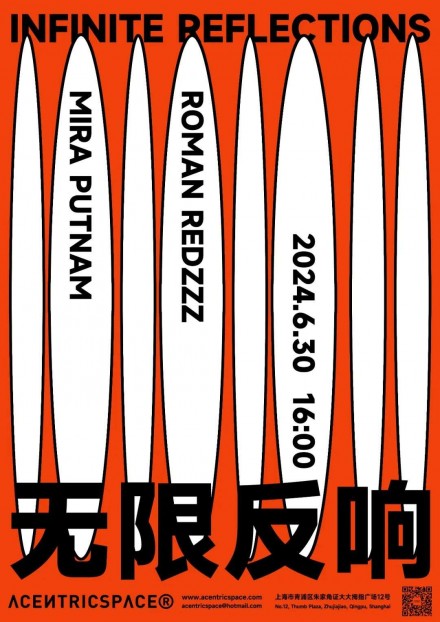
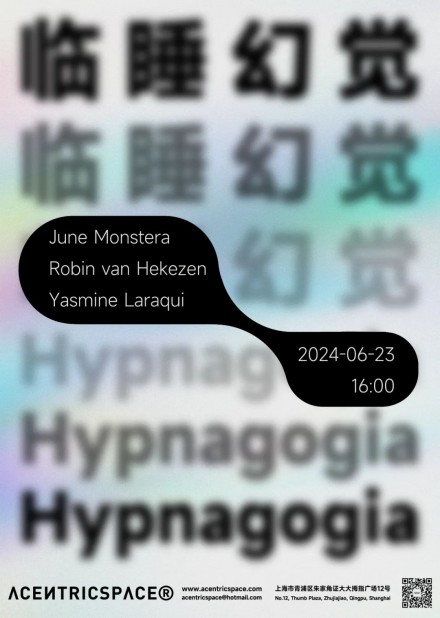
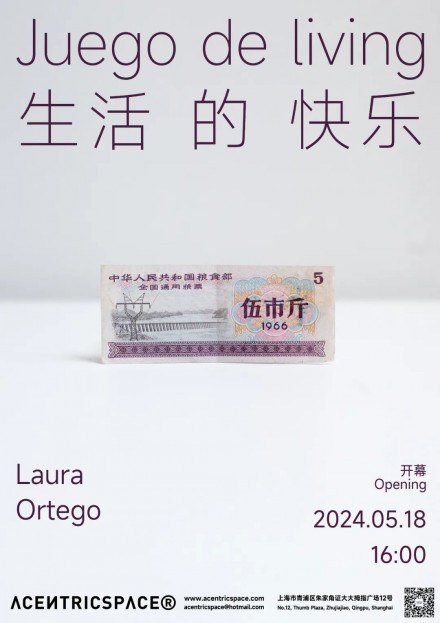
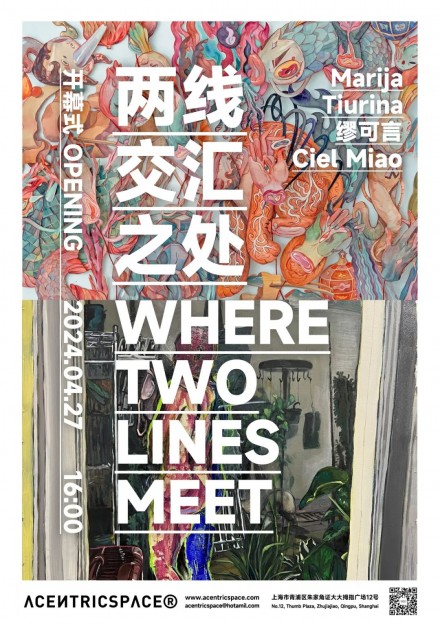
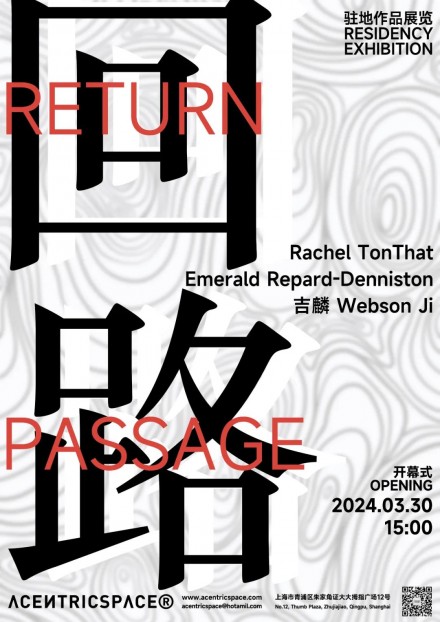
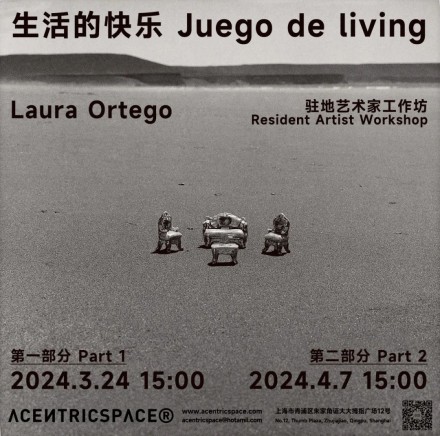
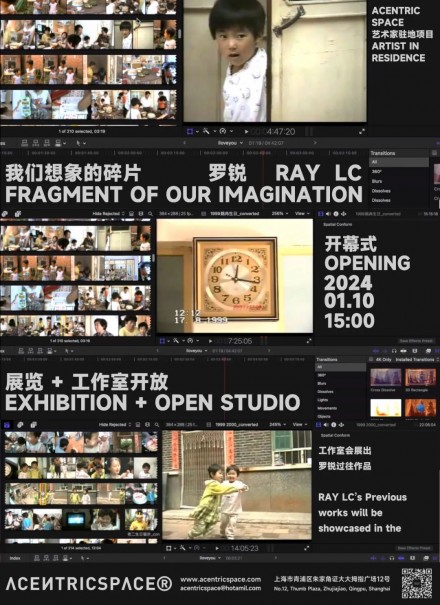
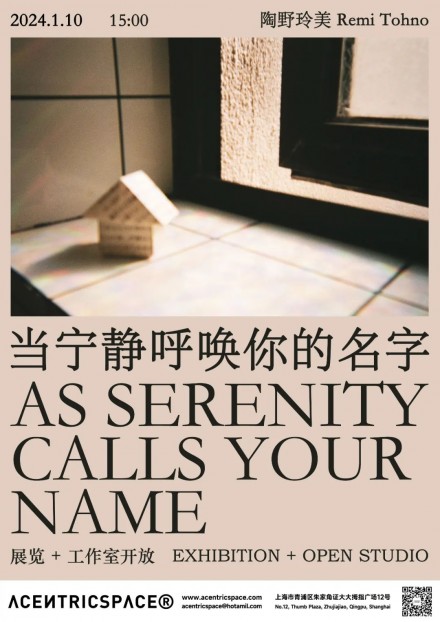
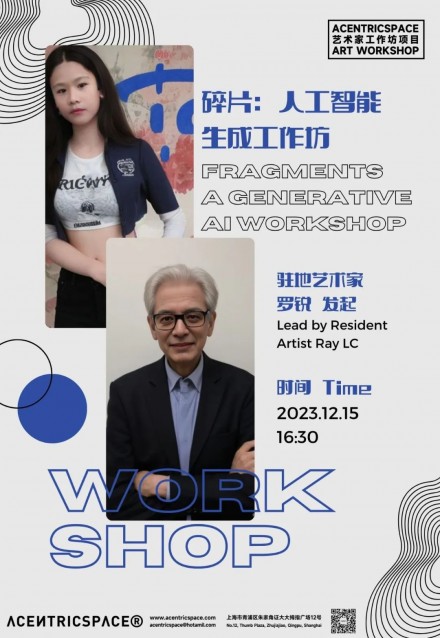
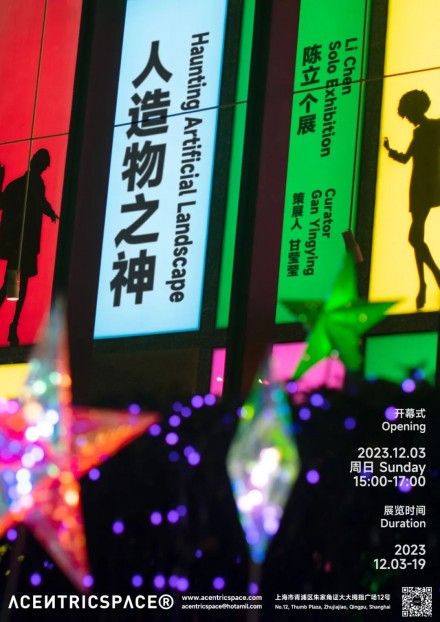
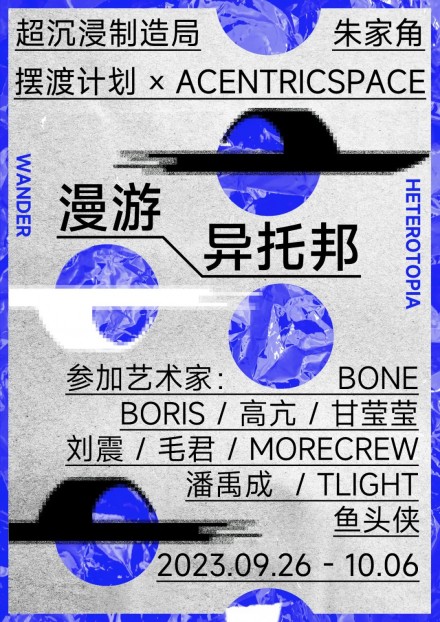
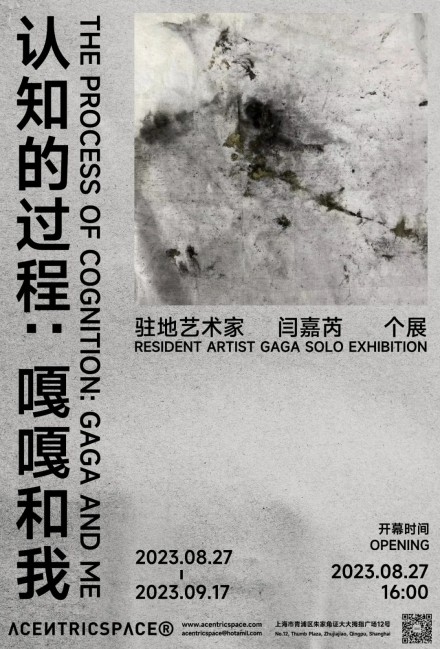
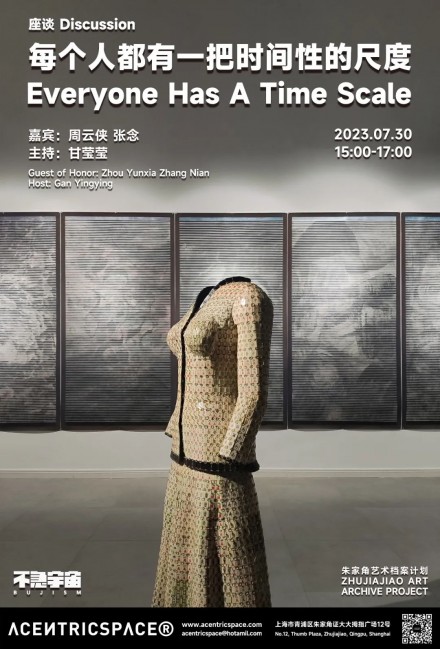
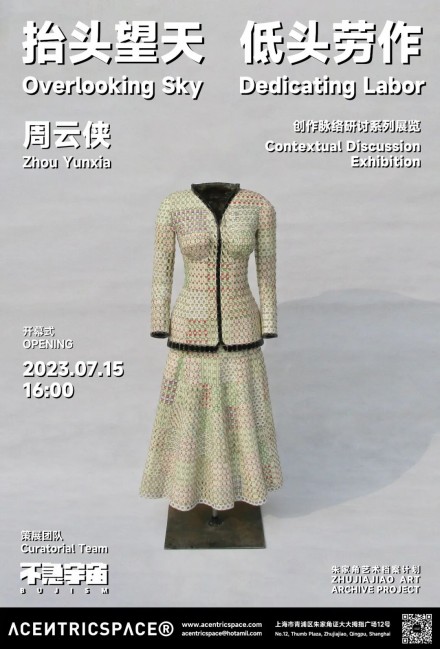
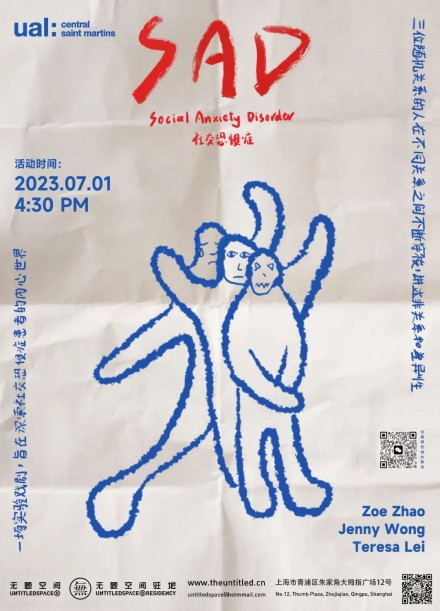
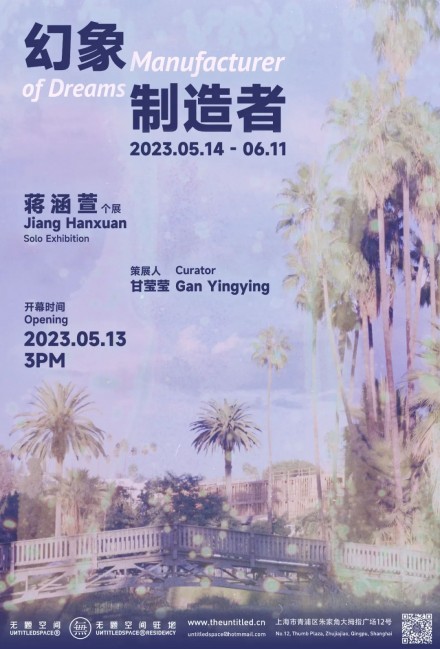
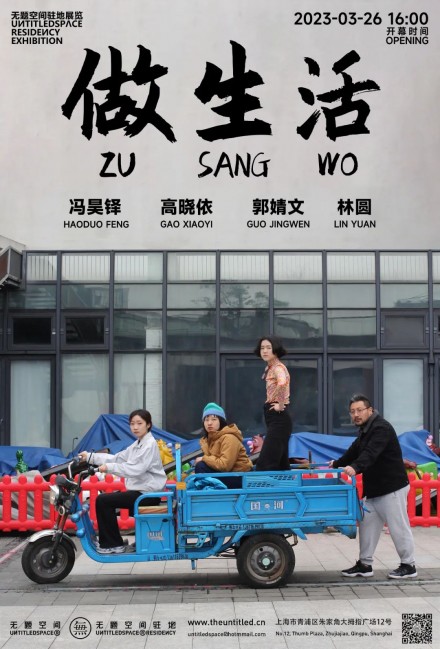
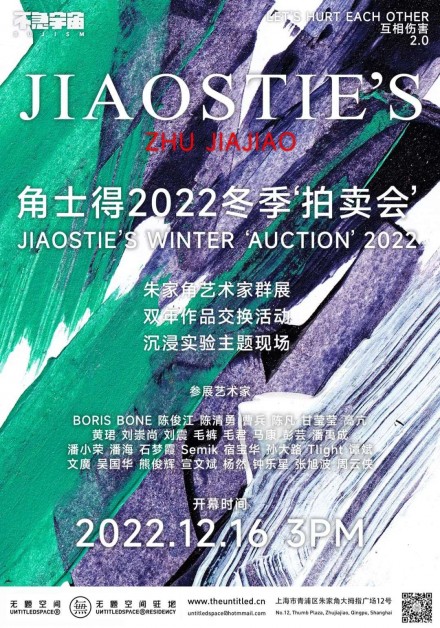
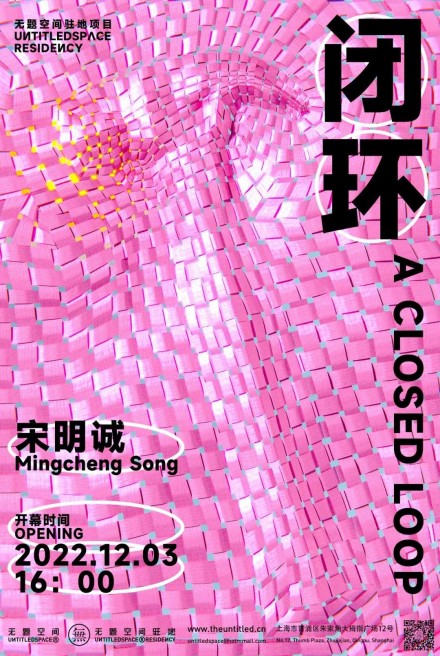
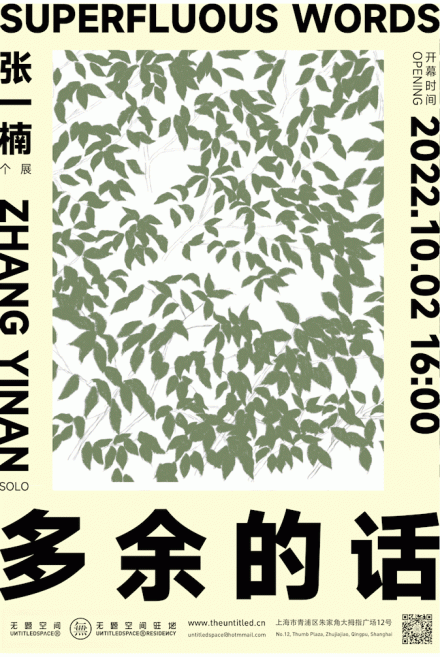
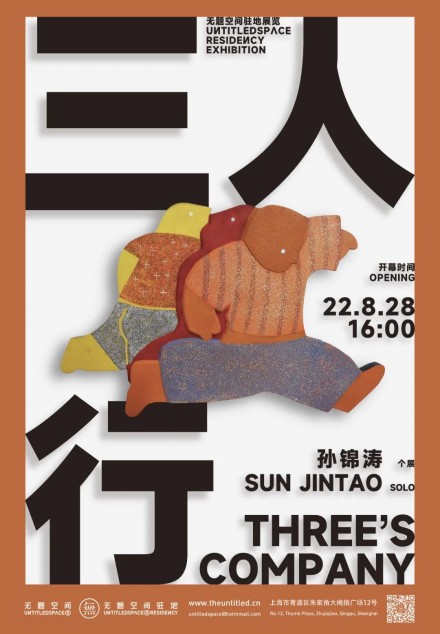
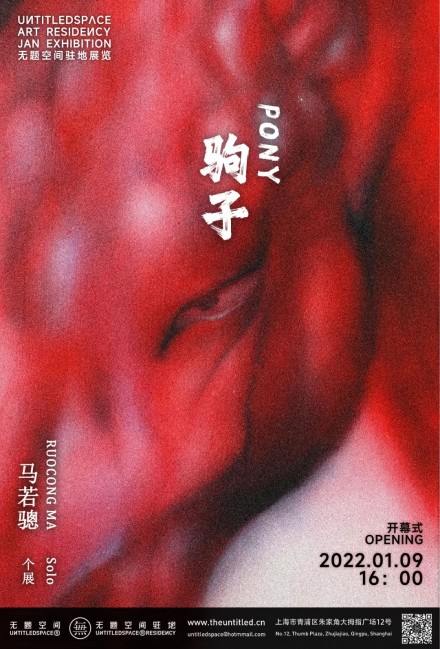
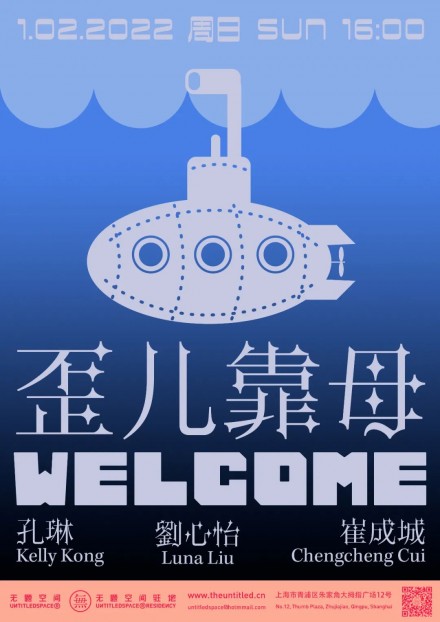
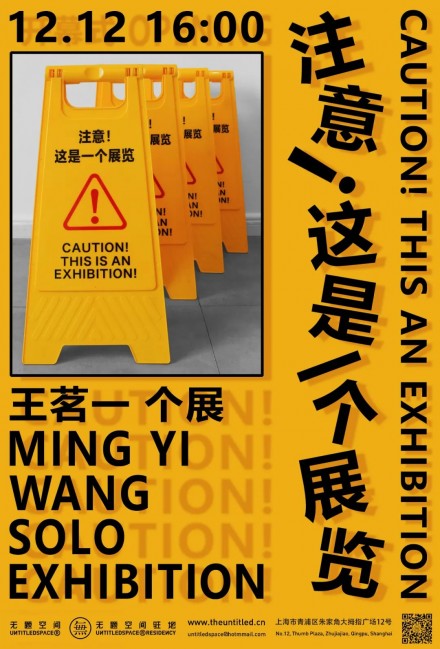
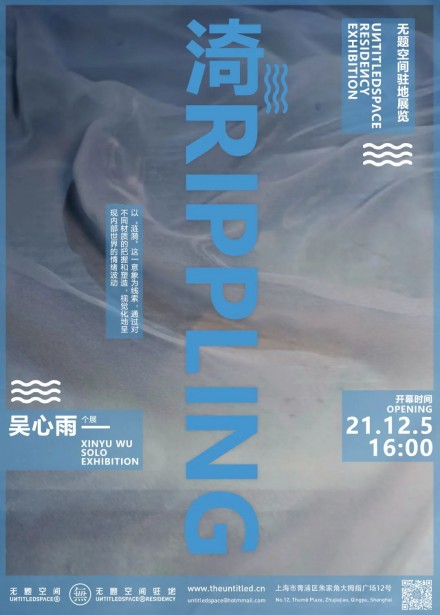
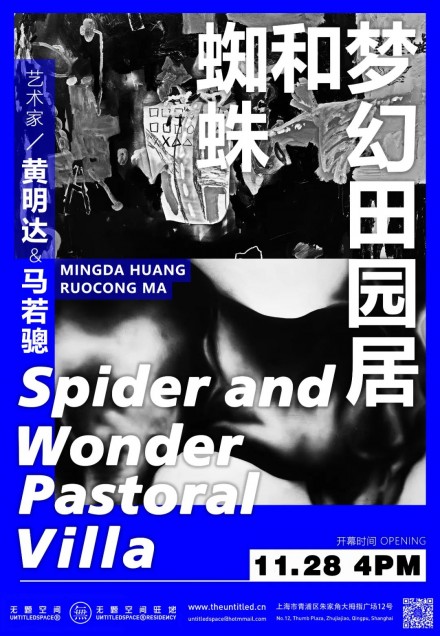
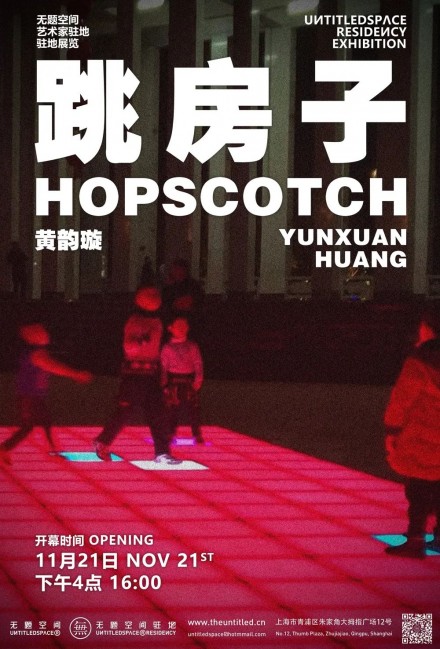
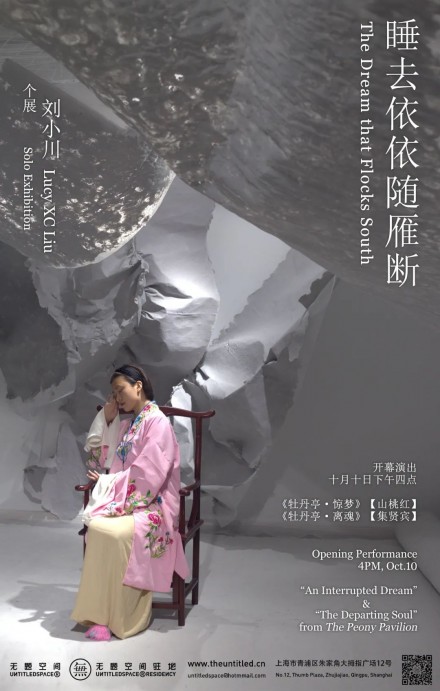
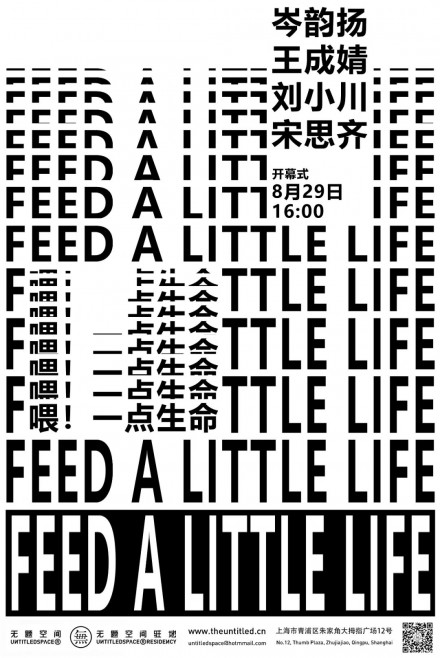
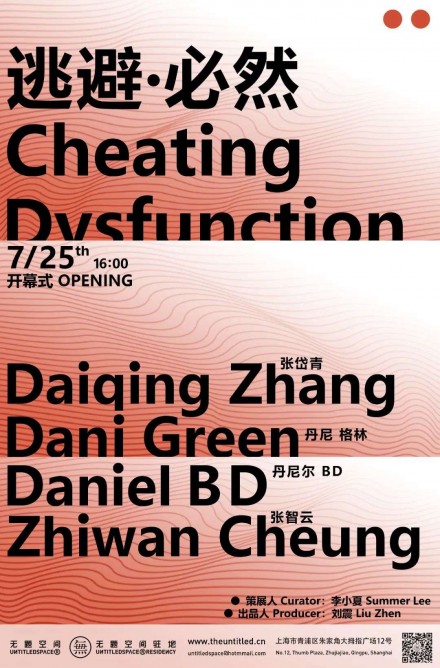
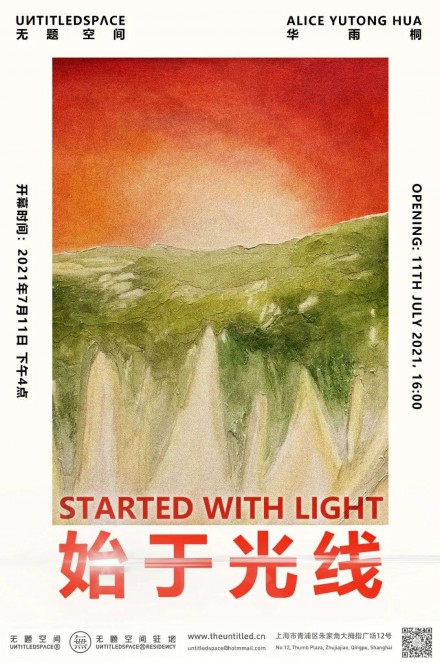
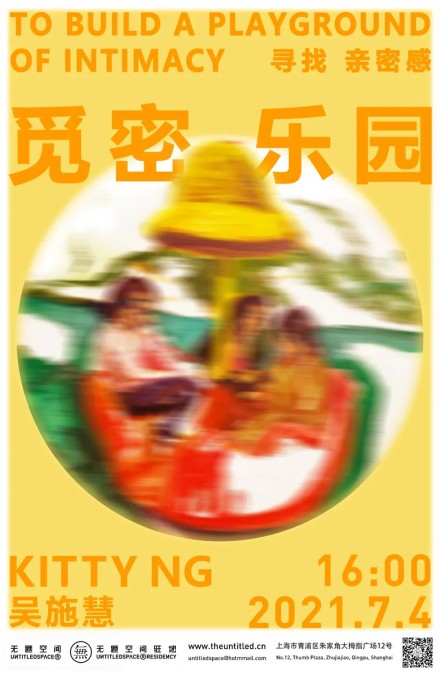
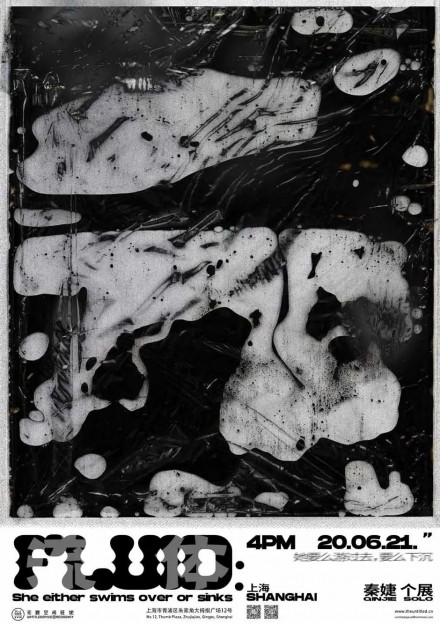
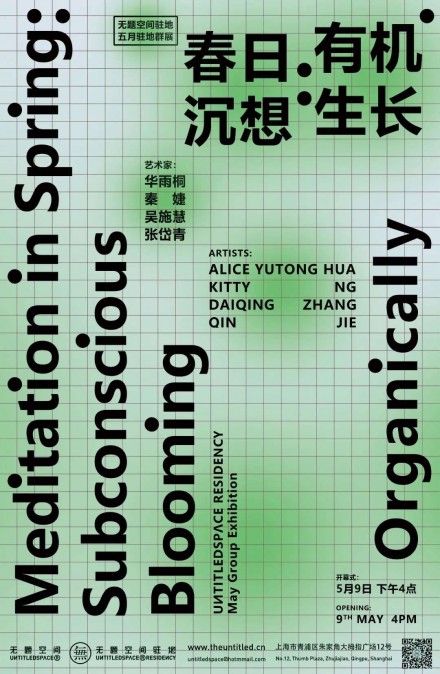

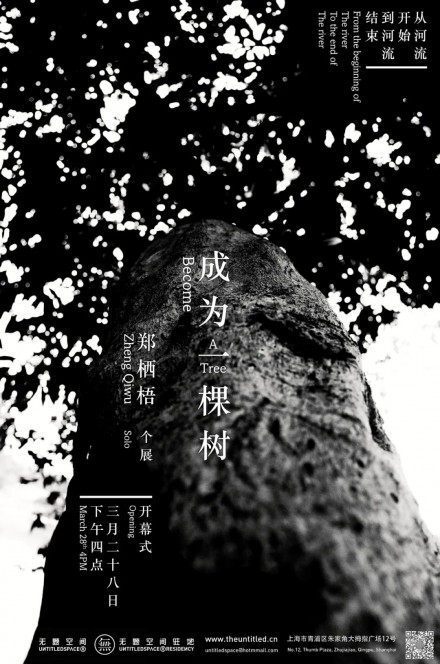
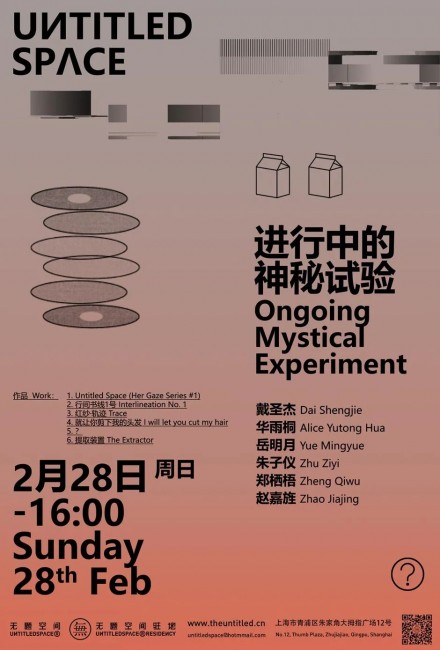

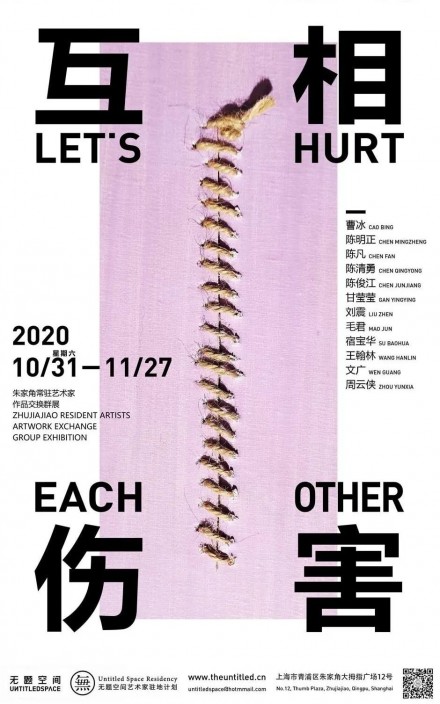
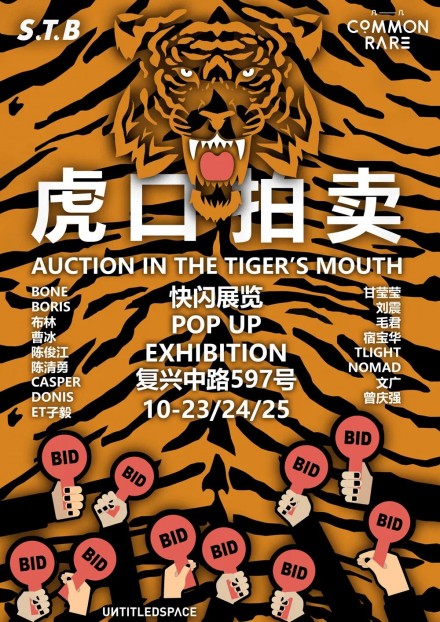
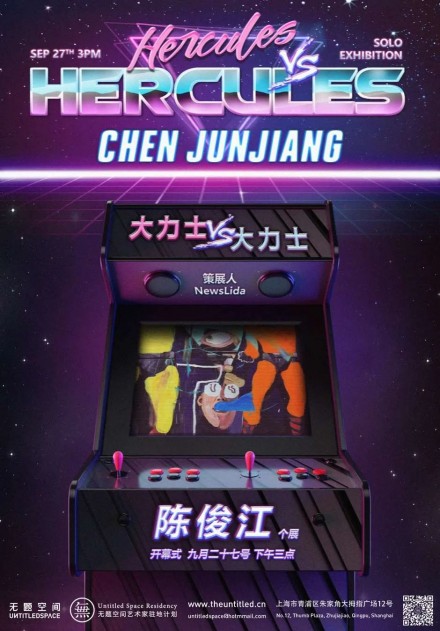
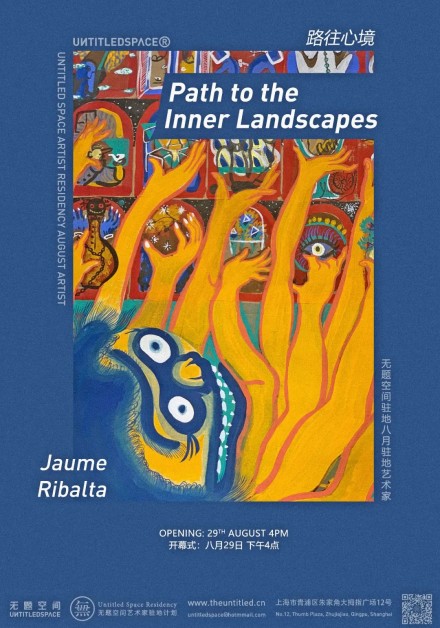
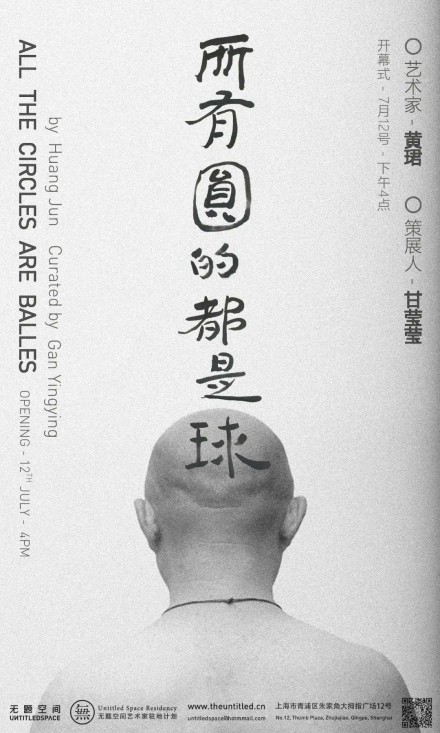
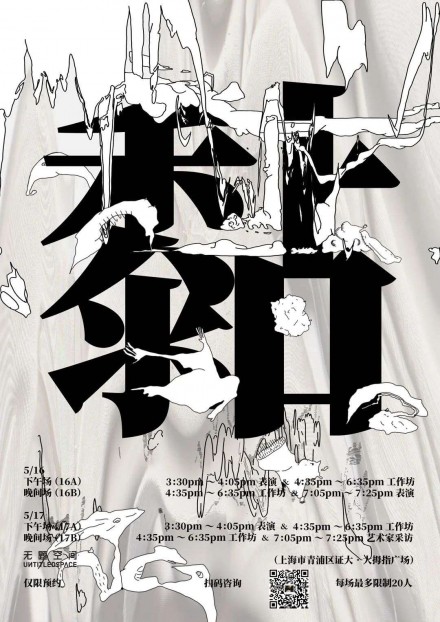
![[超]灾变论 [Hyper-]Catastrophe Theory 舜 Shun](http://www.acentricspace.com/wp-content/uploads/2024/04/wxsync-2024-04-17e42ddfe2087d093ffcdad3f414da34-440x625.jpeg)
